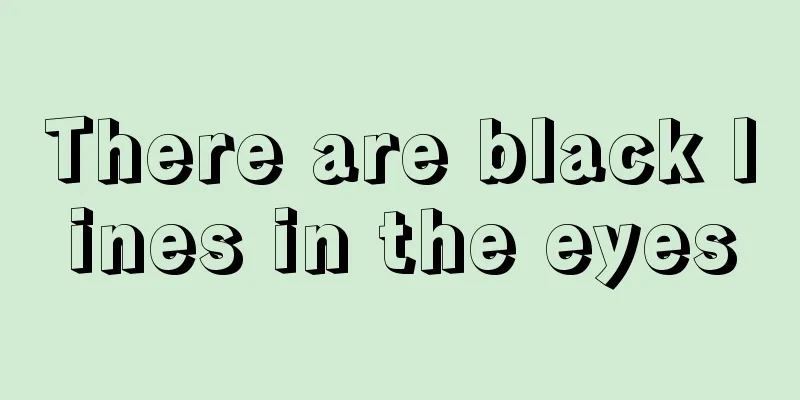There are black lines in the eyes

|
We are all concerned about issues related to our eyes because our eyes provide us with the vision that allows us to see all kinds of things in the world. Without eyes, we can only rely on our own imagination or listen to others' descriptions. When we talk about eye problems, the first thing that comes to our mind is decreased vision, or myopia. But in fact, in addition to myopia, there are many other eye-related problems, such as black lines in the eyes. What is going on? Based on the description, it is considered to be physiological vitreous opacity. Vitreous opacities are divided into physiological and pathological. Physiologically, the floating objects in front of the eyes are relatively transparent. Occasionally, in small numbers that can be counted. It does not affect vision and will not gradually increase. It may not be found using an ophthalmoscope. Pathological awareness of numerous or countless floating objects in front of the eyes. The number of floating objects may increase gradually or suddenly. Fundus mirror can be used to observe the presence of numerous or densely packed dot-, flake-, and linear floating objects in the vitreous body. Floaters are dark in color and move as the eye moves. It is divided into degenerative, inflammatory, hemorrhagic, traumatic and systemic disease. Common causes include: vitreous degeneration in the elderly, retinal or uveal bleeding into the vitreous, high myopia, congenital embryonic cells or tissues remaining in the vitreous, eye trauma, foreign bodies retained in the eye, parasites and tumors, etc. The normal vitreous body is a special mucoid tissue in a transparent gel state. It has no blood vessels or nerve tissue and its metabolism is extremely slow. Its nutrition and metabolism are completed through diffusion from adjacent tissues. Vitreous opacities refer to the presence of opacities within the vitreous body. It is not an independent eye disease, but one of the common clinical signs in ophthalmology. Clinical manifestations 1. Black shadows float in front of your eyes, and the black shadows float with the movement of your eyeballs. 2. Different degrees of visual impairment. What are the treatments for vitreous opacities? 1. If there is no visual impairment, it is generally considered to be physiological vitreous opacities. Physiological vitreous opacities generally do not affect vision or cause headaches. They are more common in myopic people and the elderly and are caused by partial liquefaction of the vitreous. If you have physiological vitreous opacities, this generally does not require treatment. 2. Pathological vitreous opacities can also cause decreased vision and should be treated according to the cause. For headache, further examination by neurology is recommended. There is really no specific good drug treatment for this disease. There are many kinds of eye diseases that cause vitreous opacities, and the patient's diet should vary according to the disease. 3. Floaters are a harmless vitreous opacity caused by senile vitreous degeneration, excessive eye use, fatigue, etc. Most floaters do not affect visual function and do not require special drug treatment. Just get adequate rest, avoid fatigue, and make sure your work and rest are regular. |
Recommend
Rose essential oil massage for ovarian maintenance
The ovaries are a very important part of a woman&...
How does honey shrink pores
Nowadays, people are paying more and more attenti...
What does potassium chloride sustained-release tablets treat?
In our lives, we treat hypokalemia caused by vari...
What is the condition of small intestinal wall thickening
The intestine can be said to be the largest organ...
What should we pay attention to when drinking water?
Water is the source of life and people cannot liv...
Is it okay to eat bananas on an empty stomach at night?
Banana is a common fruit with very high nutrition...
Melanin cultivation therapy
Melanin is something that most women want to elim...
How Much Do You Know About the Magical Uses of Vacuum Cleaners
Vacuum cleaners are very common equipment in life...
Diet and lifestyle guidance for prostate cancer patients
Diet: It is recommended to eat a variety of veget...
Is paint production harmful to the body?
People who work in the paint production industry ...
Can I practice yoga during my menstrual period?
Menstruation is something that every woman must g...
The best time to treat rectal cancer
The best time for rectal cancer resection: 1. The...
How to get rid of fatty liver?
The problem of fatty liver must never be ignored,...
How to remove the fishy smell from bird's nest
Don’t think that the taste of bird’s nest is just...
Can chronic atrophic gastritis be cured?
The problem of chronic atrophic gastritis serious...









